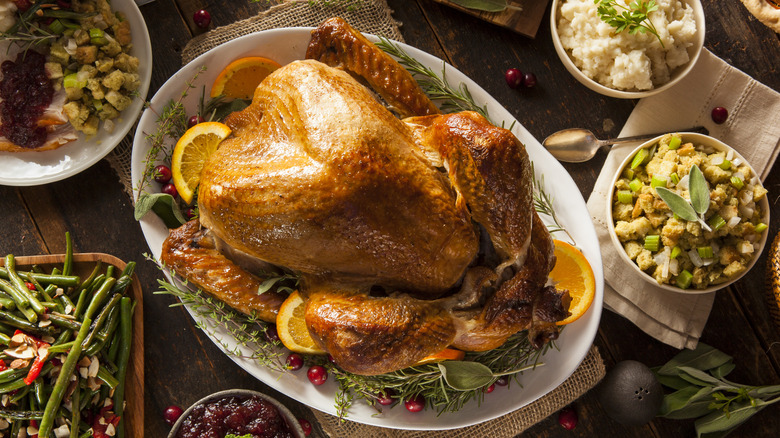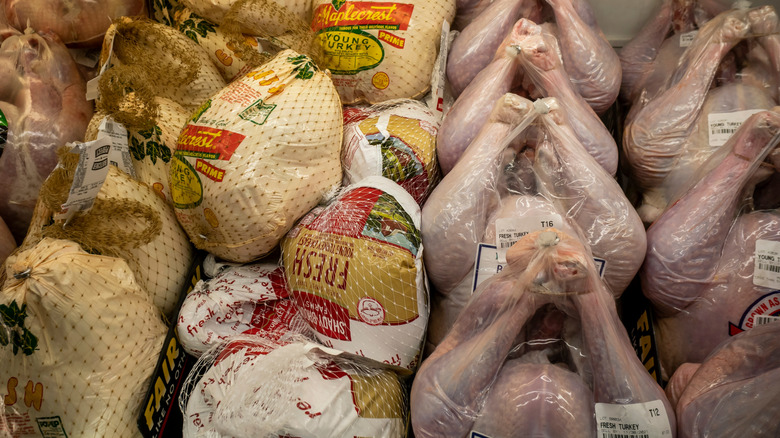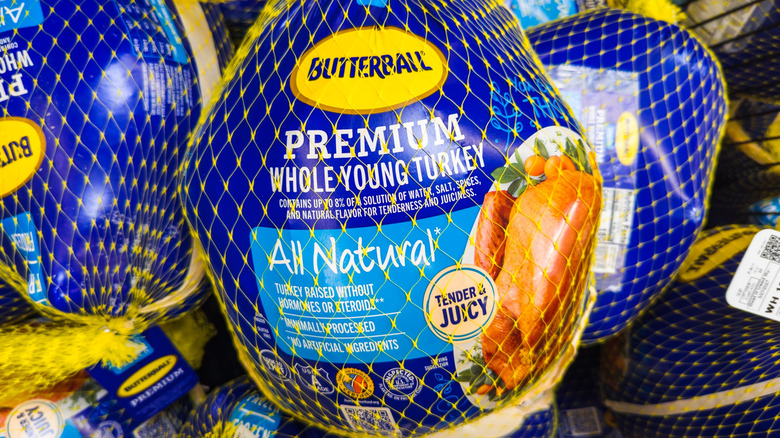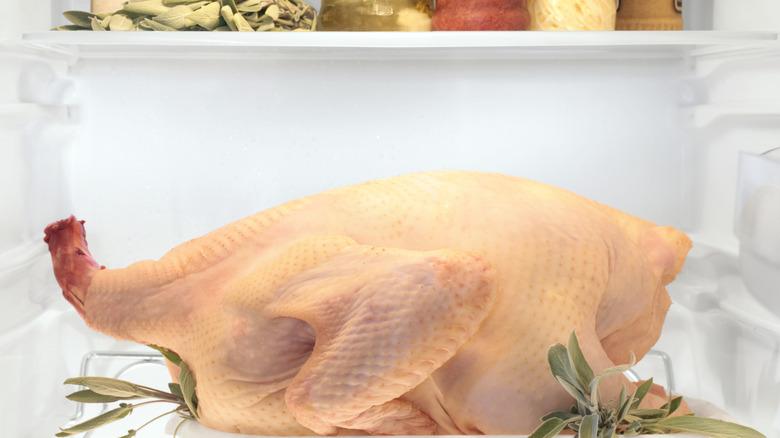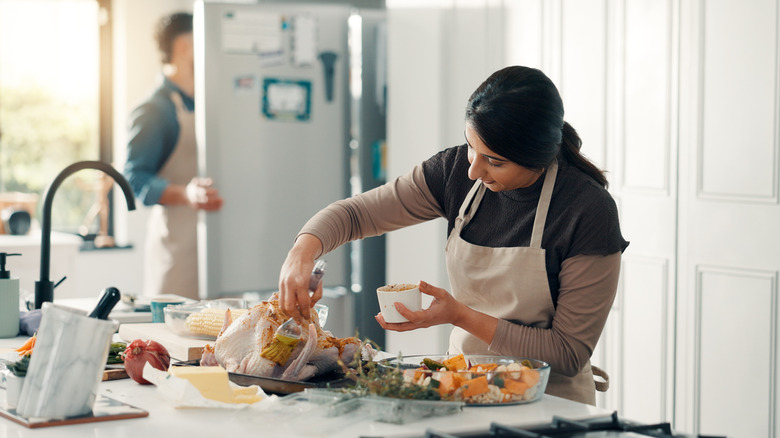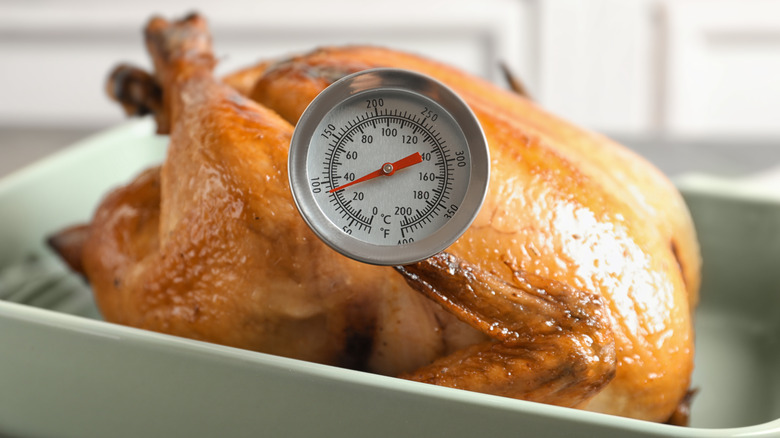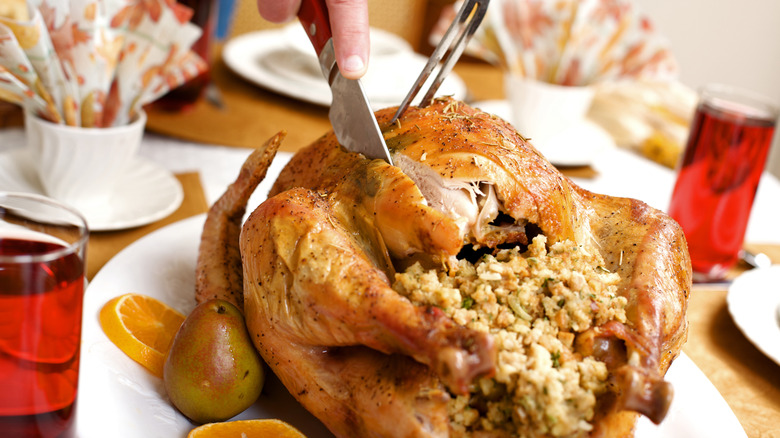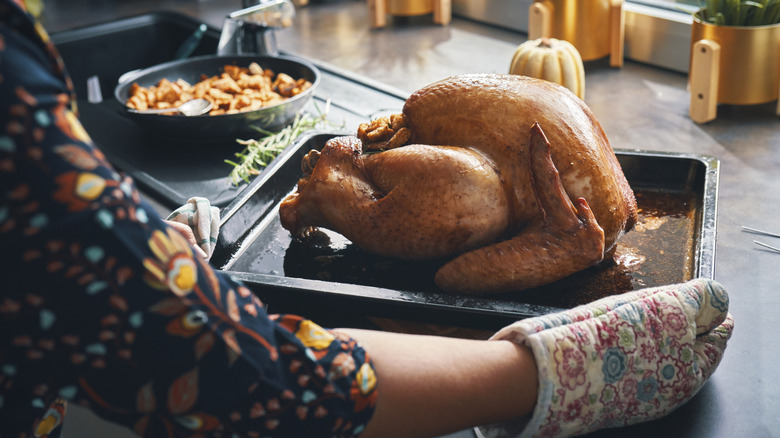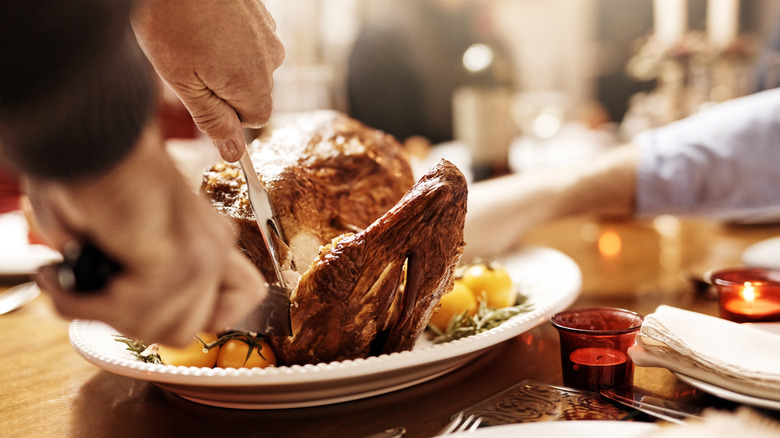10 Common Mistakes You're Making With Your Thanksgiving Turkey
That sad, dry turkey on your festive table? It's usually due to a handful of simple, avoidable blunders. Whether it's a still-frozen bird on Thanksgiving morning or a bland, overcooked centerpiece, we're here to help you dodge holiday heartbreak. This comprehensive guide, featuring insights from pros Chef Dennis Littley of Ask Chef Dennis and Chef Michael Handal from the Institute of Culinary Education, outlines the most frequent turkey pitfalls.
Crucial errors often start at the store: Picking a bird that's too big for your oven or your guest list, or thinking your frozen turkey is good to go without days of careful thawing. Then there's the prep work. Are you skipping the brine, over-brining, or worse, under-seasoning? When cooking, there are more risks: Trusting a timer that guarantees overcooked breast meat or neglecting to let the turkey rest, which sends all that juicy goodness straight onto the cutting board.
Let the experts help you navigate a stress-free process. Think of this as your go-to guide for a turkey that really delivers, from the market to the carving board. We're cutting through the confusion to ensure you have a beautifully bronzed, perfectly moist bird that steals the show at your Thanksgiving gathering.
Choosing the wrong size turkey
The turkey's place at the heart of this holiday is a tradition cemented over centuries, making its performance on the table feel like enormous pressure. But many cooks sabotage their feast before they even leave the grocery store by choosing the wrong size bird. Selecting a turkey that's too large for your oven and number of guests instantly creates a cascade of cooking and timing struggles.
As Dennis Littley explains, "When selecting a turkey, the most common error is choosing solely by weight without thinking about yield and cooking method. Bigger isn't always better. A 25-pound bird for six people is overkill and makes even seasoned cooks struggle with timing and oven space." This can lead to uneven cooking and a dried-out disaster.
Instead, plan strategically. Chef Michael Handal advises, "Consulting an easy-to-find chart will give you the size of the turkey and the number of guests it will serve. It will also allow you to judge if you will have leftovers." For smaller gatherings, he offers a simple solution, "If you have a small number of guests, a turkey breast instead of a whole turkey might suit you very well. This is a very acceptable alternative to a whole bird." The right choice from the start sets the stage for a perfectly cooked roast.
Ignoring turkey labels
Walk into any grocery store, and you'll see a wall of turkeys. Assuming they're all the same is a rookie mistake that could ruin your meal. Be certain to read the label carefully. Grabbing a pre-basted or Kosher turkey and treating it like it's just any old bird is a surefire way to end up with a salt-cured catastrophe.
Chef Dennis Littley pinpoints the issue, "Not all turkeys are the same, and that's what many people forget often. Pre-basted turkeys already contain salt and sometimes flavorings so that over-seasoning can throw off the balance. Kosher turkeys are usually saltier and require a different approach." Applying your standard brining routine to these birds will overwhelm them.
With a simple rule, Chef Michael Handal clarifies the matter. "Both types of preparation mean that the turkeys are salted, therefore additional salting or brining is not needed." His advice is straightforward, "If you wish to wet/dry brine the turkey yourself, choose one that is not Kosher or pre-brined." Your quest for a perfectly seasoned bird starts with a quick read of the label. And if you do decide to brine, our easy eight-step guide walks you through the entire process.
Rushing the thaw time
That last-minute scramble to defrost your frozen turkey is something we all need to stop. Rushing the thaw process by leaving the bird on the counter or soaking it in hot water promises disaster. This can lead to serious food safety issues and guarantees a disappointing meal.
As Chef Dennis Littley explains, this is the biggest misstep for frozen turkey users. "The single most common error is thawing too quickly, often in hot water or on the counter. That's a recipe for bacterial growth and uneven cooking." He insists on the gold-standard method, "Thawing in the refrigerator, allowing roughly 24 hours for every 4 to 5 pounds, is the safest and most reliable method to maintain quality, flavor and food safety."
Planning ahead is key since the thawing time is usually longer than most realize. Chef Michael Handal confirms, "Defrosting times for frozen turkeys are very underestimated. A frozen, medium turkey will take several days to defrost in the refrigerator, approximately one full day for every 5 pounds of frozen turkey." Do the math now because a patiently thawed turkey is your first step toward a perfect dinner. Failing all else, procrastinators can save the day with a turkey breast instead of a whole bird.
Not seasoning the turkey well enough
A perfectly roasted turkey can still fall flat if it's bland inside and out. The usual suspect? A timid approach to seasoning. Simply sprinkling salt and pepper on the skin might give the outside a nice color, but it leaves the precious meat underneath woefully flavorless. True seasoning is a process of building flavor.
As Chef Dennis Littley observes, this is a missed opportunity time and again. "One mistake I constantly see is ignoring the importance of seasoning in layers. People often put all their seasoning on the surface, but flavor penetrates better with a brine, a compound butter under the skin, or seasoning inside the cavity." He emphasizes that these techniques are non-negotiable for a memorable bird, adding, "These small steps make a massive difference in taste and juiciness. Even a perfectly cooked turkey can be bland if it isn't properly seasoned from the start."
You don't need a cupboard full of fancy spices to get this right. In fact, the most fundamental and effective method is often overlooked: a generous, even application of salt ahead of time. When done correctly — massaged over every surface, under the skin, and inside the cavity – salt can be more than enough to produce a deeply flavorful, juicy, and perfectly seasoned turkey that doesn't need anything else.
Overcooking the turkey
Everyone knows the cardinal sin of Thanksgiving: Serving a dry, overcooked turkey. That parched breast meat is almost always the direct result of leaving the bird in the oven for too long. As Chef Dennis Littley confirms, "The number one reason many home cooks end up with dry breast meat is overcooking. Dark meat can handle longer cooking, but the white meat dries out quicker."
A lot of the time, the problem is an uncalibrated oven. Relying solely on its built-in dial is a gamble. Chef Michael Handal says, "Use an oven thermometer inside the oven to be sure you are cooking at the temperature the oven is set for." To safeguard the precious breast, he shares a few clever tips, "Basting the turkey with its own juices and rendered fat will help," adding that "shingling the breast with several pieces of bacon is a nice way of protecting this part of the turkey." Nonetheless, his primary defense is a simple piece of aluminum foil, "Keep the breast covered with aluminum foil until the last 30 to 40 minutes of cooking time."
His key piece of advice, "Using an instant-read thermometer for the turkey itself will help ensure that you have not overcooked the bird." Trust the temperature, not just the clock. And if the breast still dries out, a quick toss of warm broth and melted butter with the carved meat can rescue it in a pinch.
Not using a meat thermometer
You can baste, you can brine, you can even wrap your turkey in bacon, but none of that matters if you're cooking blind. The most reliable tool in your Thanksgiving kit, as Chef Michael Handal advises, is a simple meat thermometer. Relying on guesswork, a popped timer, or a preset cook time is a fast track to disappointment, often leaving you with an irreversibly overcooked or dangerously undercooked turkey.
Chef Dennis Littley offers a crucial piece of intel for perfectly juicy breast meat. "The best way to prevent this is to use a thermometer," he explains. "Remove the turkey once the breast reaches about 160 F, not 165 F, since it continues to cook while resting." This knowledge alone is a game-changer, using carryover cooking to ensure safety without sacrificing moisture.
Stop peeking through the oven door and start trusting the numbers. First, learn how to use a meat thermometer properly, then insert it into the thickest part of the breast and the innermost part of the thigh. When it reads right, it's ready. That's how you turn Thanksgiving anxiety into total confidence.
Cooking to the wrong temperature
Achieving the right temperature can still leave you with a dry turkey if you misunderstand the why and how of carryover cooking. As we've learned, the standard mistake is waiting for the breast to read 165 F while it's still in the oven. By then, the residual heat will push it far past that number while it rests, cooking away its valuable moisture. But how do you aim for the turkey to hit perfection and not overshoot it?
Chef Michael Handal lays out the necessary guidelines for both stuffed and unstuffed birds. "Many home cooks are not familiar with the finished, internal cooking temperatures," he notes. His guidance is precise, "For an unstuffed turkey: Check the temperature at the thickest part of the breast or the innermost thigh area, away from bone. It needs to get up to 165 F — make sure to account for carryover cooking." This means pulling the bird from the oven when the breast registers around 160 F, allowing the residual heat to work its magic.
For a stuffed turkey, things change a bit. Handal clarifies,"Check the temperature at the center of the stuffing (inside the cavity and not the meat itself)." The stuffing must reach 165 F for safety, making proper thermometer placement imperative. This simple timing adjustment can make all the difference between a turkey that's merely cooked and one that's exceptionally juicy.
Mishandling a stuffed turkey
That final instruction changes everything. When you choose to stuff your turkey, the priorities of your entire meal undergo a fundamental shift. The greatest risk lies in the cavity's core, where a dense mass of stuffing can remain dangerously undercooked even as the surrounding meat reaches a safe temperature.
Chef Michael Handal is unequivocal about the danger. "Stuffing that has not reached 165 F runs the risk of harboring harmful bacteria — the outside areas of a stuffed turkey will get to temperature before the center," he warns. This thermal lag means your seemingly perfect cooked turkey breast is not an indicator of safety.
"When stuffed, the stuffing itself becomes the focal point and not the turkey," Handal explains. Your digital thermometer must plunge directly into the very heart of the dressing, not just the adjacent meat. This rule changes your entire cooking timeline and tempers the joy of a quick carve. For many, the reward of a deeply flavored, steaming-hot stuffing is worth the vigilance. For others, it's a compelling reason to bake your dressing in a separate, safe casserole dish instead. Your next task, if you choose: Nailing the stuffing recipe.
Skipping the rest time
That moment when the turkey comes out of the oven, all golden and aromatic, really tests every cook's patience. But diving into carving immediately is a huge mistake. Cutting into a hot bird too soon sends all those precious juices you worked hard to keep rushing onto the cutting board, leaving the meat dry. When given the chance to rest properly, the turkey reabsorbs its juices.
Chef Dennis Littley identifies this as a critical misstep. "The most frequent post-cooking error is carving too soon. A turkey fresh out of the oven will lose flavorful juices that keep the meat moist if sliced immediately." His prescription is simple yet non-negotiable, "I recommend letting it rest for at least 20 to 30 minutes under a loose foil tent. This allows the juices to redistribute and keeps the breast meat tender and flavorful."
With a larger or stuffed bird, Chef Michael Handal emphasizes the need for proper timing. "A good-sized turkey will need 30 to 40 minutes of resting under a lightly tented piece of aluminum foil before it is ready to be carved," he advises. For a stuffed turkey, he offers a key tip to speed up the process safely, "Carefully remove the stuffing to a serving dish and keep warm. This will allow air to circulate inside the turkey, cooling it more quickly." We promise this patience pays off in every succulent slice.
Carving with a dull knife
You've navigated the thaw, perfected the roast, and patiently waited through the rest. Now, one misstep can undo all that effort: Reaching for a dull knife. A blade that isn't razor-sharp doesn't slice; it mashes and shreds, crushing the delicate fibers of your perfectly cooked turkey and turning beautiful slices into a ragged mess.
Chef Michael Handal leaves no room for debate on this point. "A sharp knife is also mandatory," he states. "There is nothing worse than trying to carve with a dull knife. It will only succeed in crushing and mangling the turkey." This goes beyond appearance. A crushed piece loses its structural integrity, leaking those precious juices you worked so hard to retain right onto the board. As for which knife, select one with a blade that is thin at top and thicker near the handle.
That final carve is your grand finale. A few confident knife strokes on a honing steel or a pass on a whetstone before you begin makes all the difference. A sharp blade glides through the meat cleanly, preserving its texture and moisture.

